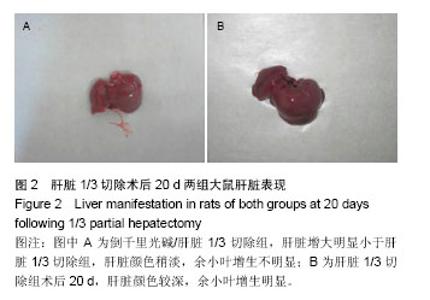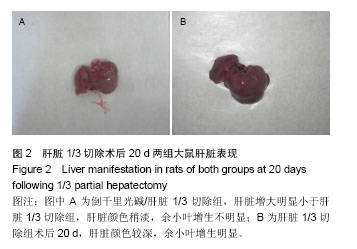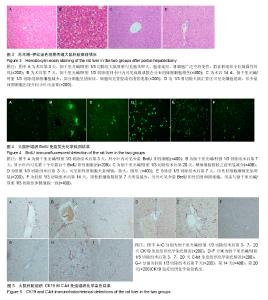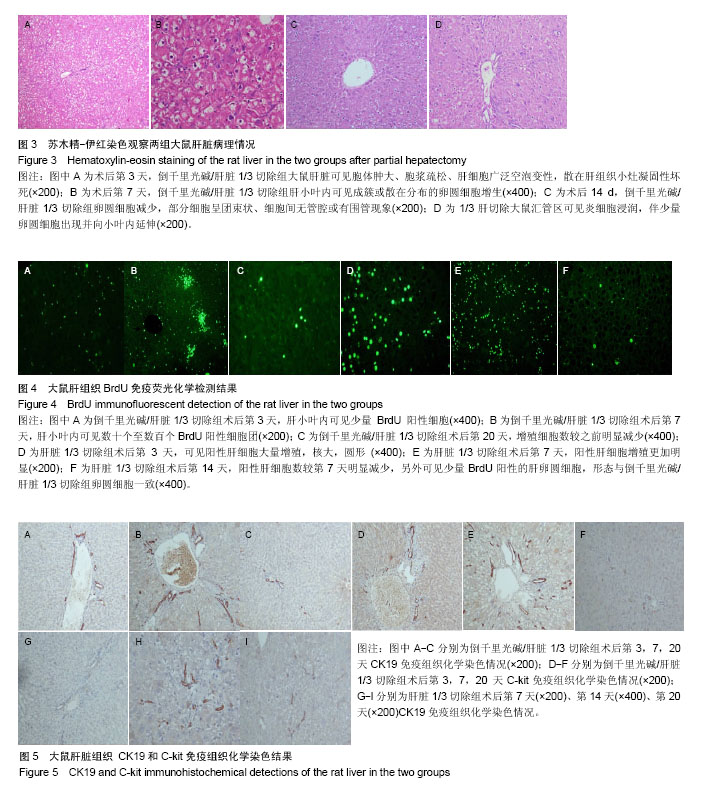| [1] Chen S, Xu L, Lin N,et al.Activation of Notch1 signaling by marrow-derived mesenchymal stem cells through cell-cell contact inhibits proliferation of hepatic stellate cells. Life Sci. 2011;89(25-26):975-981.[2] 张伟,陈孝平.人肝脏祖细胞研究进展[J].中华肝脏病杂志, 2006, 14(11): 875-877.[3] Zhang Y, Bai XF, Huang CX. Hepatic stem cells: existence and origin. World J Gastroenterol.2003;9(2):201-204.[4] 刘君,薛玲.肝卵圆细胞分化调控机制的研究进展[J].中华肝脏病杂志, 2005, 13(12): 951-953.[5] Walkup MH, Gerber DA.Hepatic stem cells: in search of. Stem Cells.2006;24(8):1833-1840.[6] Shupe T, Petersen BE. Potential applications for cell regulatory factors in liver progenitor cell therapy. Int J Biochem Cell Biol;2011;43(2): 214-221.[7] Burra P, Bizzaro D, Ciccocioppo R,et al.Therapeutic application of stem cells in gastroenterology: an up-date. World J Gastroenterol.2011;17(34):3870-3880.[8] Best DH, Butz GM, Coleman WB. Cytokine-dependent activation of small hepatocyte-like progenitor cells in retrorsine-induced rat liver injury. Exp Mol Pathol.2010;88(1): 7-14.[9] Gordon GJ, Coleman WB, Hixson DC, et al.Liver regeneration in rats with retrorsine-induced hepatocellular injury proceeds through a novel cellular response. Am J Pathol.2000;156(2): 607-619.[10] Kohneh-Shahri N, Regimbeau JM, Terris B,et al.Liver repopulation trial using bone marrow cells in a retrorsine-induced chronic hepatocellular injury model. Gastroenterol Clin Biol.2006;30(3): 453-459.[11] Laconi E, Oren R, Mukhopadhyay DK,et al.Long-term, near-total liver replacement by transplantation of isolated hepatocytes in rats treated with retrorsine. Am J Pathol. 1998;153(1): 319-329.[12] Toma W, Trigo JR, de Paula AC,et al.Preventive activity of pyrrolizidine alkaloids from Seneciobrasiliensis (Asteraceae) on gastric and duodenal induced ulcer on mice and rats. J Ethnopharmacol.2004;95(2-3):345-351.[13] Small AC, Kelly WR, Seawright AA, et al.Pyrrolizidine alkaloidosis in a two month old foal. Zentralbl Veterinarmed A.1993;40(3): 213-218.[14] Picard C, Lambotte L, Starkel P, et al.Retrorsine: a kinetic study of its influence on rat liver regeneration in the portal branch ligation model.J Hepatol.2003;39(1):99-105.[15] 马明,盛哲津,张梦杰,等.肝脏大部分切除实验在小鼠肝再生研究中的应用[J].中国细胞生物学学报, 2011, 33(12): 112-118.[16] Mroczek T, Glowniak K, Wlaszczyk A. Simultaneous determination of N-oxides and free bases of pyrrolizidine alkaloids by cation-exchange solid-phase extraction and ion-pair high-performance liquid chromatography. J Chromatogr A.2002;949(1-2): 249-262.[17] 余宏宇,李文林,谢东甫,等.小鼠单纯肝切除后再生肝组织内大小核分裂相和卵圆细胞的观察[J].第二军医大学学报, 2005,26(3): 251-256.[18] 廖芝玲,陈加玲,邝晓聪,等.倒千里光碱对肝大部分切除小鼠肝脏损伤后再生修复的影响[J].中国组织工程研究与临床康复,2010, 14(6):1023-1026.[19] Kimura M, Watanabe M, Ishibashi N, et al.Acyclic retinoid NIK-333 accelerates liver regeneration and lowers serum transaminase activities in 70% partially hepatectomized rats, in vivo. Eur J Pharmacol.2010;643(2-3): 267-273.[20] Gomez EV, Perez YM, Sanchez HV,et al.Antioxidant and immunomodulatory effects of Viusid in patients with chronic hepatitis C. World J Gastroenterol.2010;16(21):2638-2647.[21] 李劲,张建,刘光泽,等. D-氨基半乳糖与脂多糖对小鼠肝脏损伤后再生修复的影响[J].南方医科大学学报,2012, 32(1): 50-54.[22] Copper RA, Bowers RJ, Beckham CJ, et al.Preparative separation of pyrrolizidine alkaloids by high-speed counter-current chromatography. J Chromatogr A.1996; 732(1): 43-50.[23] Sieders E, De Somer F, Bouchez S,et al.Haemostasis monitoring during sequential aortic valve replacement and liver transplantation. Acta Gastroenterol Belg.2010;73(1): 65-68.[24] Ichinohe N, Kon J, Sasaki K,et al.Growth ability and repopulation efficiency of transplanted hepatic stem cells, progenitor cells, and mature hepatocytes in retrorsine-treated rat livers. Cell Transplant.2012;21(1):11-22. |



